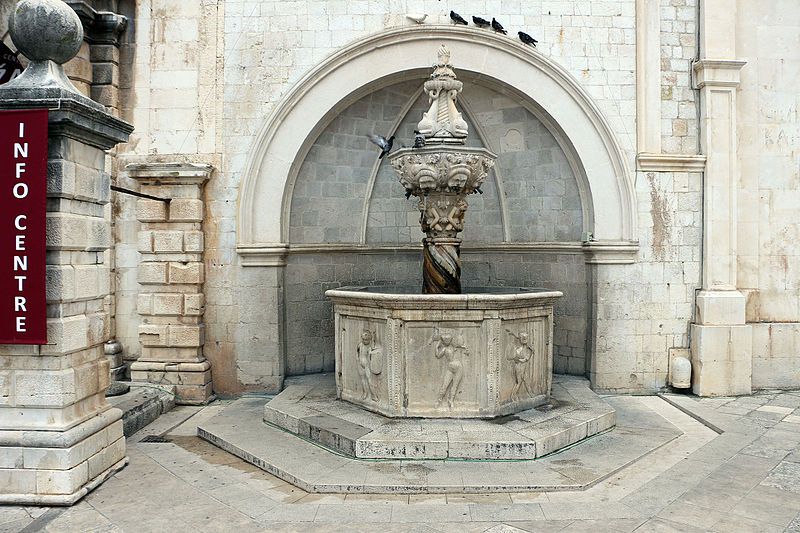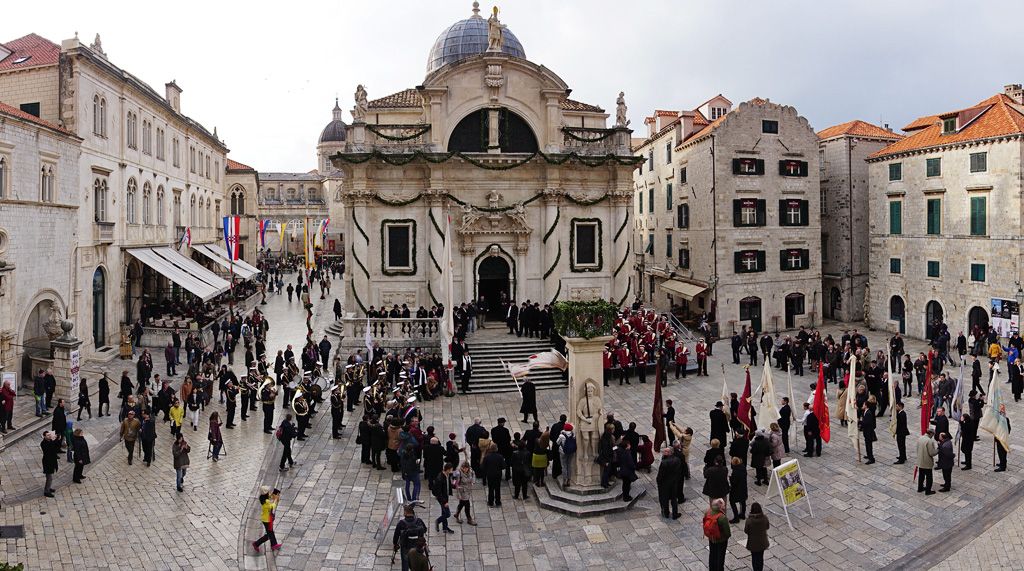UNESCO and Croatia: World Heritage Site – Dubrovnik Old City
Let's take a look into one of the best-known heritage sites in Croatia and the city that attracts millions of visitors each year. This in-depth article about Dubrovnik comes at about the same time as the 40th anniversary of the inscription of Dubrovnik's old city on UNESCO's World Heritage list, and the 10th anniversary of inscribing Festivity of St. Blaise onto UNESCO's List of the Intangible Cultural Heritage of Humanity.
Conveniently enough, we're at the beginning of a very special month for Dubrovnik, for an event which has been happening each year on February the 3rd.
Well known as the ''Pearl of the Adriatic'' or more recently as the popular Game of Thrones filming location (Kings Landing), Dubrovnik has been one of the historically most important Mediterranean ports since the thirteenth century. Dubrovnik has numerous preserved Gothic, Renaissance and Baroque churches, monasteries, palaces, and fountains. It did get damaged during the earthquake in 1667, and more recently during the Homeland War, but it still kept its beauty.
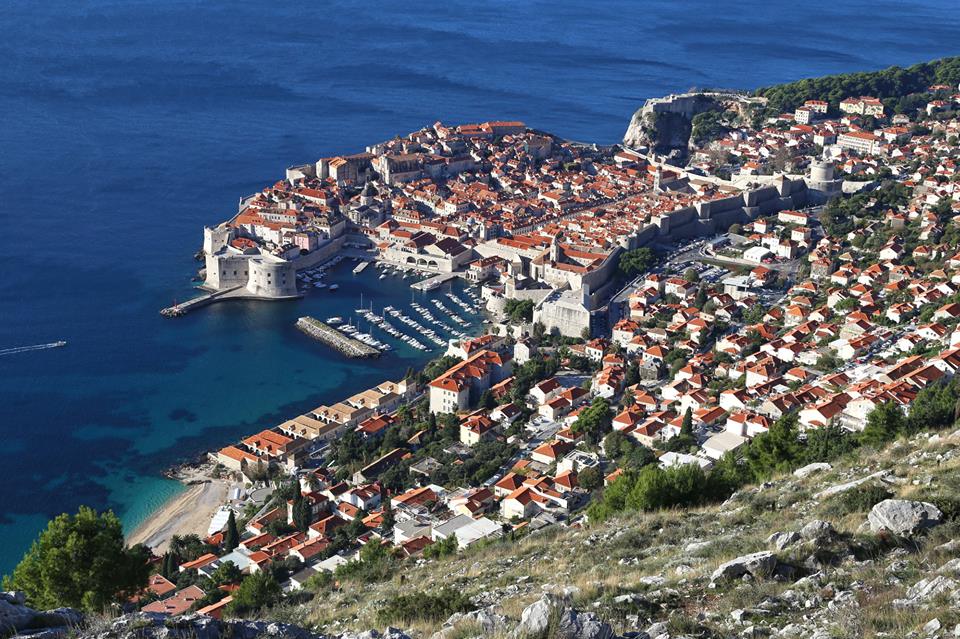
TZ Dubrovnik
To understand just why Dubrovnik has so much heritage and how it has been so well preserved, let’s take a look into this remarkable city's very long history.
The Dubrovnik Republic, which represents the golden period of Dubrovnik's history, perfectly regulated the city and life within it through its statute and other historic documents. This well-preserved city has been able to afford to lie on its Laurels owing to this, as well as its good geographic location and economy which was for centuries based on maritime and merchant activities.
The latest archaeological research discovered that there was a settlement dating back to the sixth century at this location, and this expanded with the arrival of Croats in the seventh century.
Travel and traffic between east and west during and after the Crusades resulted in the development of maritime and merchant centres in the Mediterranean and Adriatic in the twelfth and the thirteenth centuries. Another important event in the history of Dubrovnik was the Zadar Treaty, which in 1358 liberated Dubrovnik from Venetian rule while other Dalmatian towns fell under Venetian rule in 1420 and remained under their control up until the end of 18th century.
This is the reason why Dubrovnik was able to develop much more quickly than the other Dalmatian towns.
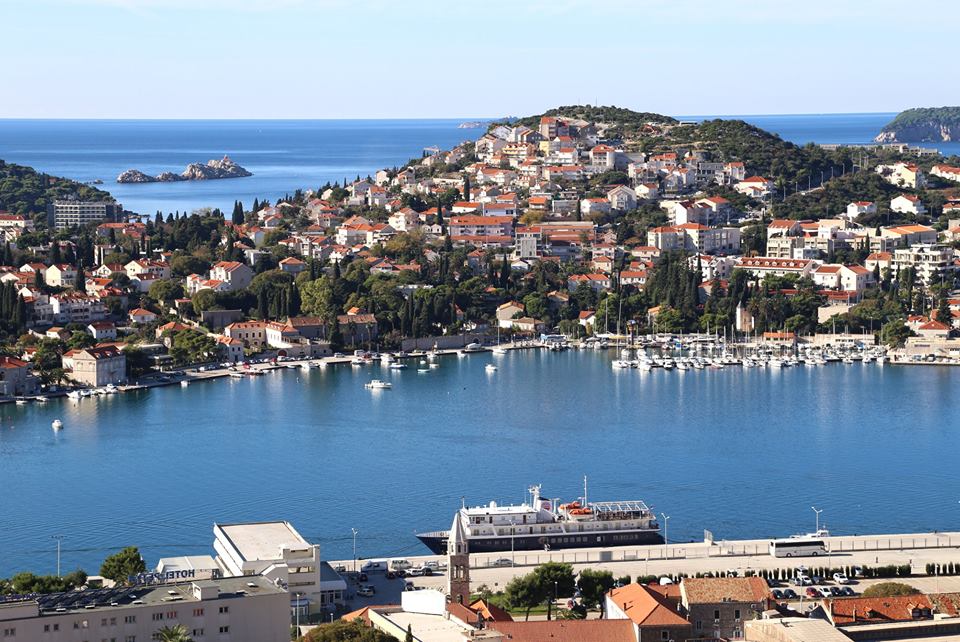
TZ Dubrovnik
In the fourteenth and fifteenth centuries, Dubrovnik was one of the most significant maritime and mercantile centres of Adriatic together with Venice and Ancona. Dubrovnik expanded its territory by using contracts and purchasing the land around the town including the islands, such as Mljet, Lastovo, the Elaphites, and of course Lokrum. The independence of the Dubrovnik Republic was completed by the fifteenth century when they had the independent election of the rector and council, and set their own currency, their own state flag with the image of St. Blaise, independent legislature and the right to establish consulates abroad.
The state authority was based on the great council which had members of aristocratic families in it. They appointed the members of the Senate and the small council which was the executive body of the great council. The rector was appointed on a monthly basis as a nominal symbol of authority.
In the fifteenth century, Dubrovnik had a well-organised transit trade route with the Balkan inland. In 1525, due to the Ottoman expansions in the area, the Dubrovnik Republic decided to pay tributes to the Ottomans and in return, they had the right to free trade throughout the growing Ottoman empire. The Dubrovnik Republic had no army on its own but managed to preserve its independence by being neutral in international conflicts and using the tutelage of powerful countries. The only rival of the Dubrovnik Republic was the envious Venetian republic.
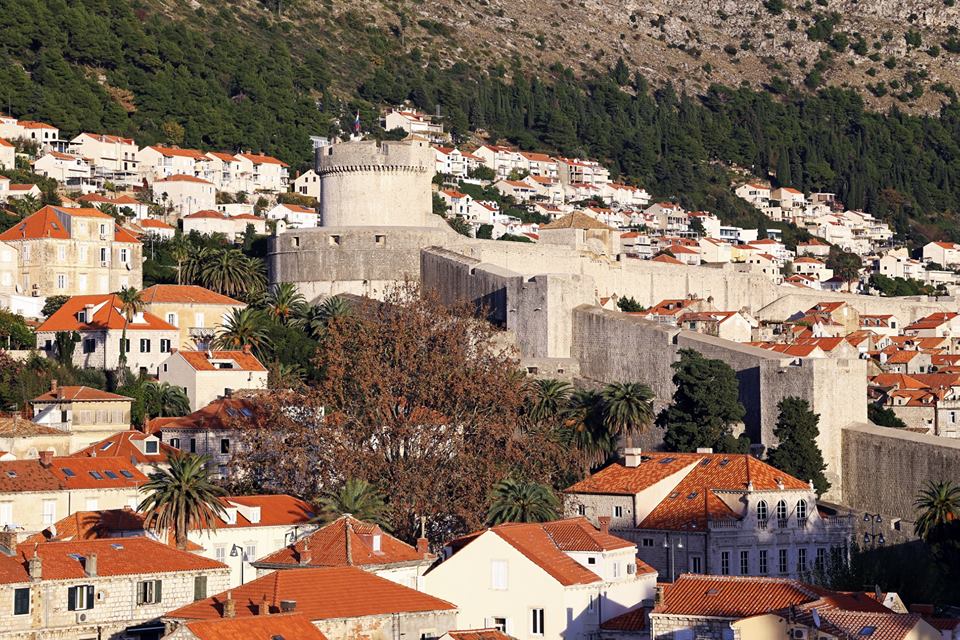
TZ Dubrovnik
The Dubrovnik Republic's golden age started in the sixteenth century – back then, Dubrovnik's merchant navy matched those across the rest of the globe with its quality fleet of 180 to 200 ships. These ships were used for long and dangerous journeys through the Mediterranean and the Black sea, as well as ocean journeys to northern ports in England and Germany, even going as far as India and the Americas. Material prosperity helped to shape a humanist culture and the Republic received a great level of achievement in its urban and architectural development that has been maintained to the present day in its literature and poetry, sciences, and in many other fields of art and culture.
In the seventeenth century, the general crisis of the Mediterranean maritime affair also affected Dubrovnik's maritime trade. The catastrophic earthquake in 1667 was another awful event for the Dubrovnik Republic. In the eighteenth century, Dubrovnik got another chance at the economic revival of maritime trade under a neutral flag. In 1815, Dubrovnik joined other parts of Dalmatia and Croatia. In more recent history, Dubrovnik was damaged during the Homeland War, with the worst attack happening on December the 6th, 1991.
Now, let's see what can be found in Dubrovnik when it comes to valuable heritage which has been recognised by UNESCO and numerous people who visit Dubrovnik each year.
Dubrovnik's City Walls

TZ Dubrovnik
Dubrovnik's city walls were established in the thirteenth century and were systematically and continuously perfected over several hundred years, until 1660, when the last tower, the St. Stephen’s Bastion, was finished. The walls stretch for over 1940 metres and consist of the main wall, sixteen towers, three forts, six bastions (bulwarks), two corner forts (cantonatas), three pre-walls with several turrets, three moats, two barbicans, two drawbridges, and one breakwater.
This is one of the best-preserved fortification systems in Europe with three forts: Minčeta, Bokar and St. John. The walls are up to 22 meters high in some places, with a thickness of between 4 to 6 meters from the mainland side, and from 1/5 to 3 metres on the seaside.
Among the many known and unknown builders of the wall and its construction, some of them are: Paskoje Miličević, Nicifor Ranjina, Marin Držić, Župan Bunić, Miho Hranjac, Juraj Dalmatinac, Michelozzo di Bartolomeo Michelozzi of Florence, Onofrio and Simeone Della Cava, Antonio Ferramolino of Bergamo, Giovanni da Siena, Bernardino di Parma, Marcantonio Bettaci of Florence, Seporoso Mateucci of Fermo and Giovanni Baptista Zanchi of Pesaro.
The shape of the walls was definitely defined by available weapons of the time and the various defence techniques of the past. The first walls were built when the first settlement was consctructed back in the eighth century, and Dubrovnik enjoyed the natural protection of the sea, with the walls acting as additional protection for Dubrovnik's citizens.
You can enter Dubrovnik's city walls next to Pile Gate, St. John's Fort and St. Luke's Fort.
Minčeta Fortress
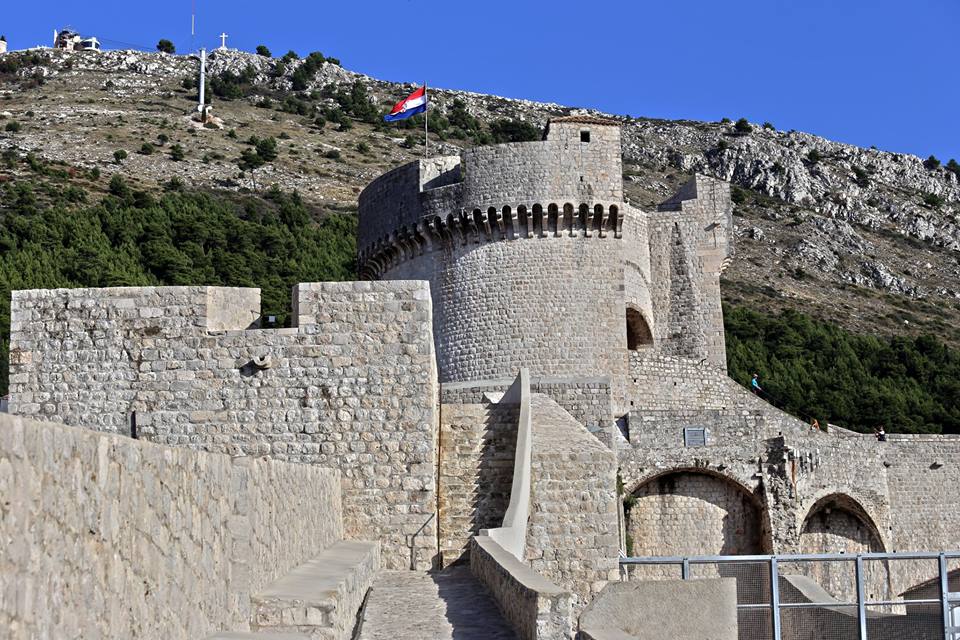
TZ Dubrovnik
Minčeta fortress is placed on the highest north-western part of the city. It is a large circular tower with a big battlement suspended by a stone support. The first quadrangular tower was constructed by Nikifor Ranjina in 1319, the architect Michelozzo Michelozzi gave it its present form and it was completed in 1464 based on the design of Juraj Dalmatinac, who was famous for numerous works in Dalmatia among which the best-known is the Šibenik cathedral, another UNESCO world heritage site.
St Luke’s Tower

TZ Dubrovnik
If you walk eastward along the city walls towards Ploče gate, you will get to St. Luke’s tower. In 1467. Paskoje Miličević designed the bulwark for the old St. Luke’s tower with openings for cannons. The tower controlled the access to the harbour.
St John's Fort
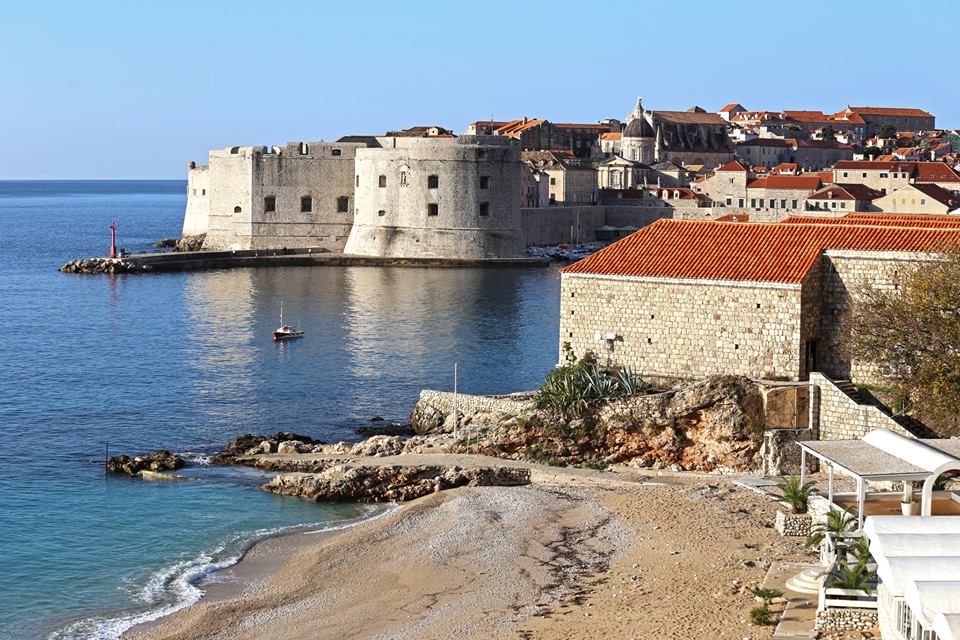
TZ Dubrovnik
This is the first quadrangular pier tower and it was constructed back in 1346 in order to protect the city harbour in the southeast, and its outlines are still visible on the western wall. The shape of the fort we know today was completed in the sixteenth century when the whole complex got bigger and outer wall was extended.
Bokar Fort
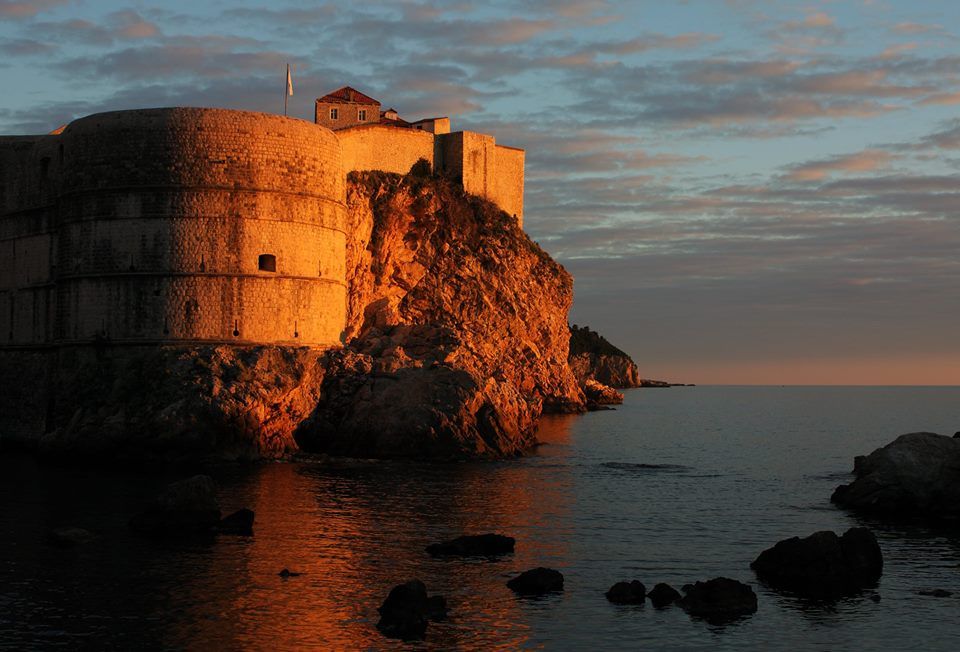
TZ Dubrovnik
This fort was important for defending the city. The gate and the bridge, as well as the moat are located at Pile. The semi-circular tower was designed by Florentine architect Michelozzi in the fifteenth century.
Lovrijenac
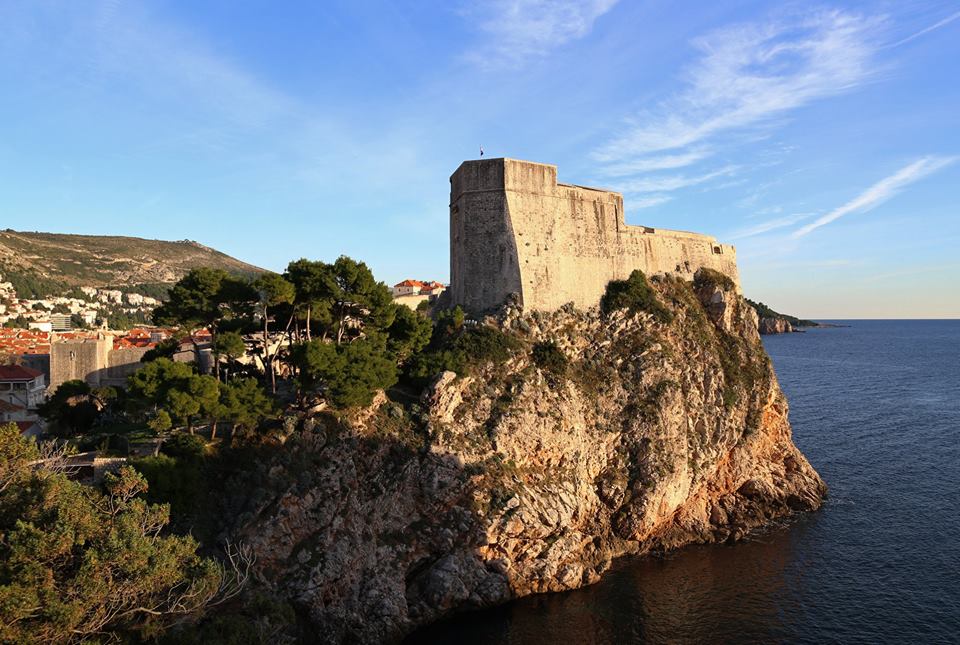
TZ Dubrovnik
This fort is set on the 37-metre-high cliffs outside of the city walls. You can reach it by walking along Pile bay and climbing the steep, stone stairs. This fort was built to protect the entrance to the city from the west. The fort's construction began in 1018 and it was completed in the sixteenth century. The walls are 4 to 12 metres thick. The entrance door boasts the Latin inscription: Non bene pro toto libertas venditur auro (Freedom is not sold for all the gold in the world). There lies the chapel of St. Lawrence and its courtyard where occasional performances and plays are held today.
Revelin Fort
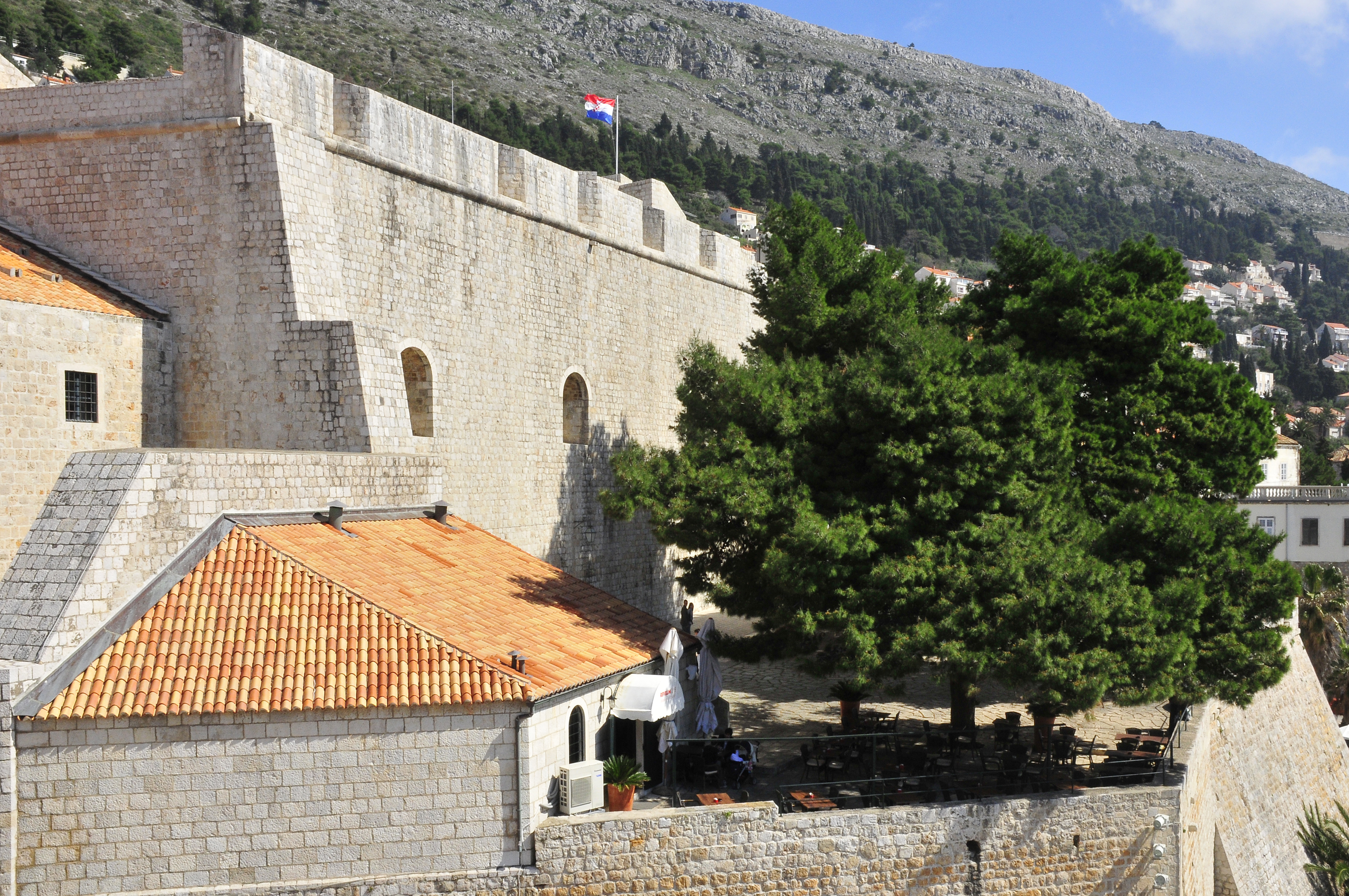
LBM1948
Revelin fort was built outside of the city walls and it was once part of the defence complex of Ploče Gate. The lower part of the fort was built in 1463, and was then rebuilt in 1538. The fort protected the eastern part of the city and the entrance to the city harbour. It has three entrances and is surrounded by a moat and the sea on three sides. Ivan Rabljanin kept the foundries for casting cannons and bells in the large interior. Now it is used as a place for Dubrovnik summer festival plays.
Pile Gate
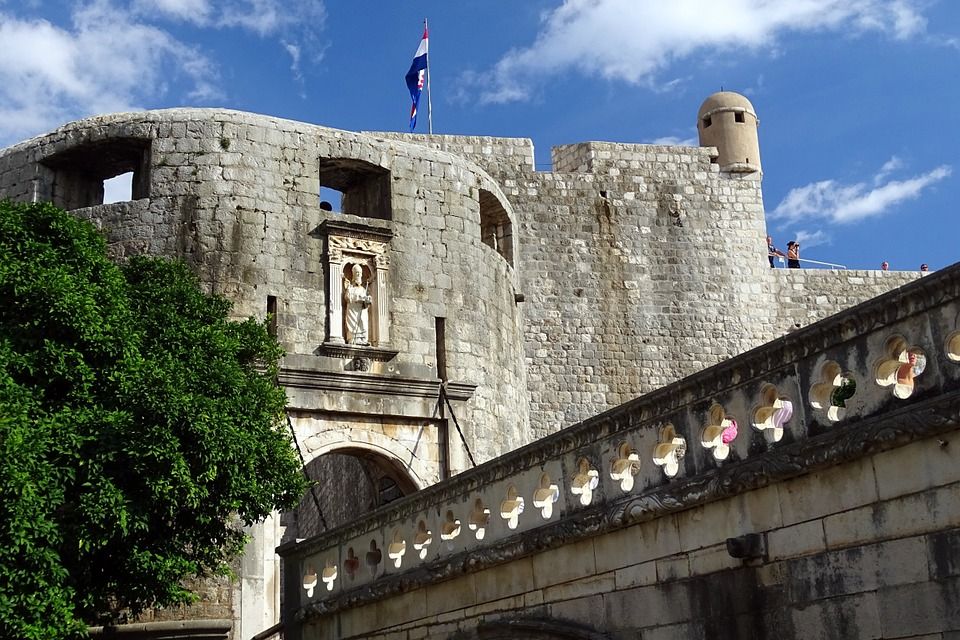
Pixabay
Just outside the city walls lies Pile – here, you first have the seaside promenade constructed outside of the walls. Here you enjoy an amazing view of the city walls and of Lovrijenac fort. If you enter the city through Pile Gate, the first thing you will see is the stone statue of St. Blaise. There is a stone bridge and a wooden bridge which lead to the outer gate, then to the renaissance semi-circular tower. When you pass through the inner gate, you enter Dubrovnik's main street – Placa or Stradun.
Stradun
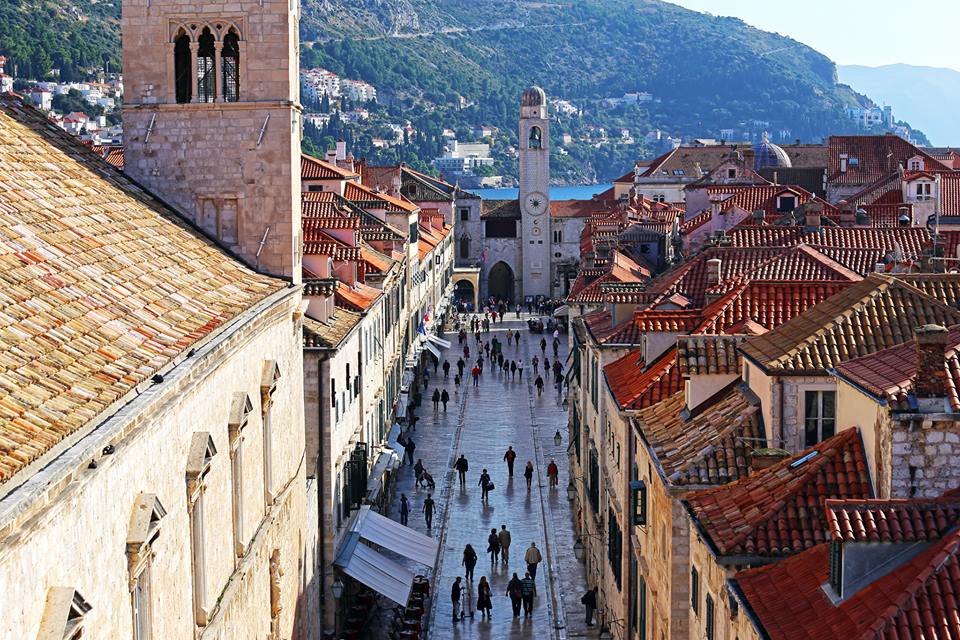
TZ Dubrovnik
Placa or Stradun is the main street in Dubrovnik. Stradun is 298 metres long and the statute of the city from 1272 determined the final plan for the city and its main street. The houses on Stradun are built in baroque-style architecture with shops on the street level. Stradun has its modern-day shape after the earthquake in 1667, when a large number of gothic and renaissance palaces were sadly destroyed. Even today, Stradun is the main centre for all the events in the town.
Large Onofrio's Fountain
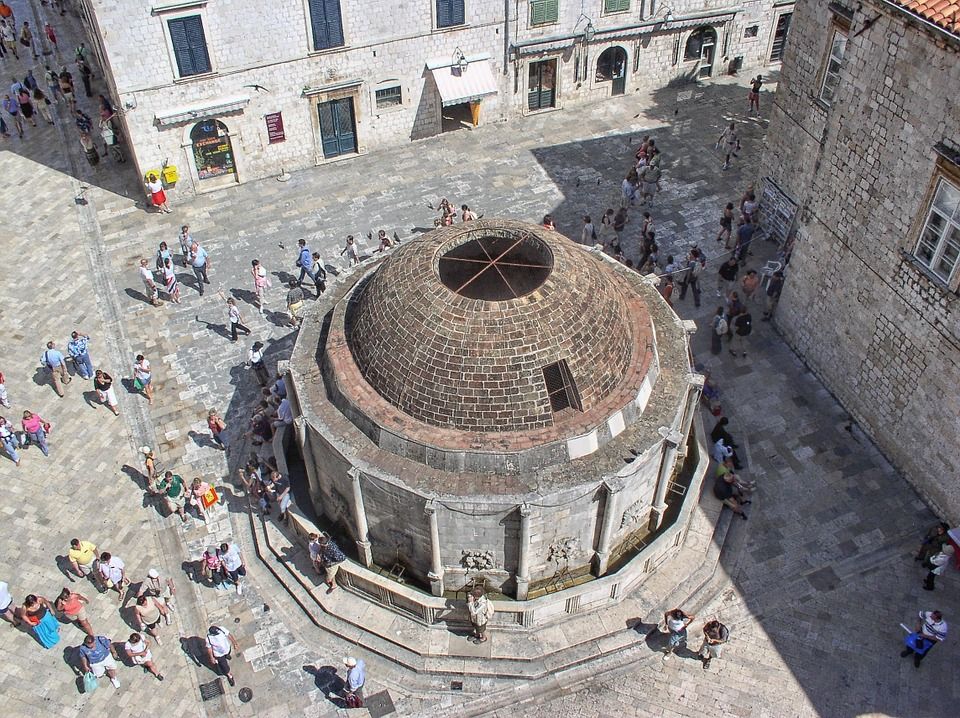
Pixabay
When on Stradun, one of the main sights is the large Onofrio's fountain. This is a large polygonal fountain with sixteen stone carved maskerons which provide running water. The fountain was designed by Onofrio Della Cava who also designed the small fountain at the other end of Stradun – the fountains were built for public use in 1438 when fresh water was brought to the city from Rijeka Dubrovačka. The fountain is now connected to the new waterworks system. The cupola was damaged during the 1667 earthquake and later reconstructions sadly failed to restore it.
Small Onofrio's Fountain
Sailko
Small Onofrio's fountain was designed in 1446 and the stone mason work was handled by Pietro di Martino di Milan. Located in a niche to the city guard building, it is part of the original setting for the carnival play “The tale of Stanac” by the famous Dubrovnik playwriter Marin Držić.
City Guard Building
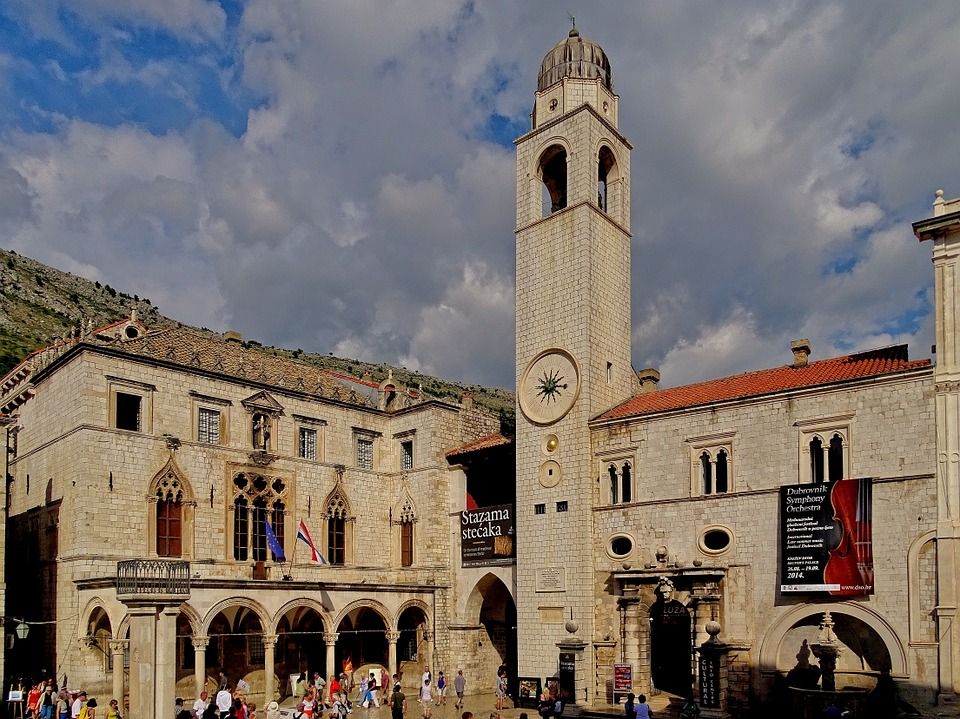
Pixabay
The City Guard building was the admiral’s residence during the fifteeth century. It was restored in the twentieth century and it is now the entrance to the cinema.
Rector's Palace
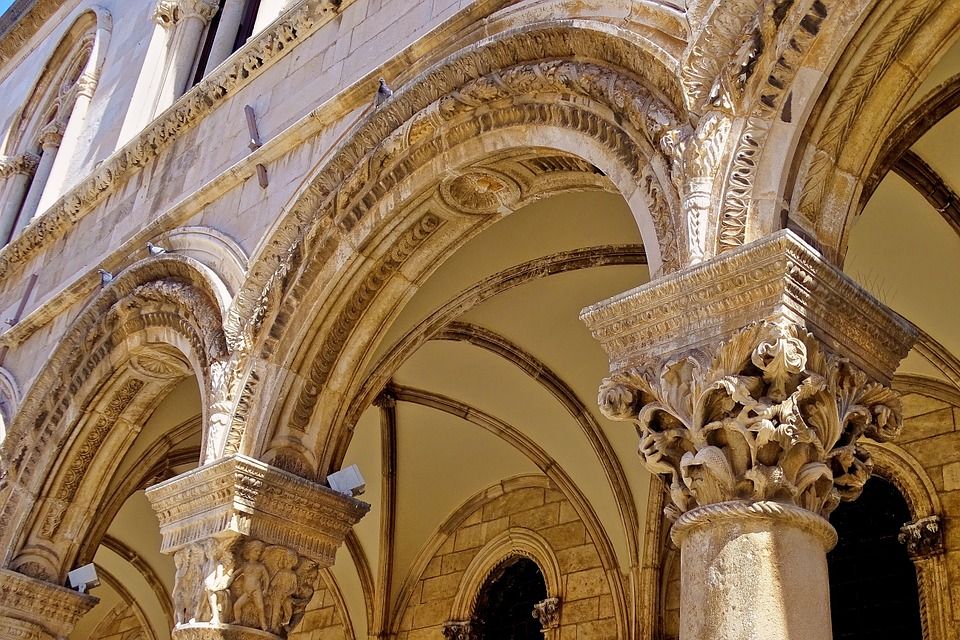
Pixabay
The Rector's Palace is one of the most important pieces of heritage on the Croatian coast – this was the administrative centre of the Dubrovnik Republic – it is built in a gothic style with reconstructions in renaissance and baroque style. It was damaged in the fifteenth century by gunpowder explosions and restored by Onofrio Della Cava in late gothic style in 1435. The second gunpowder explosion in 1463 destroyed the western facade
and the two famous architects Juraj Dalmatinac and Michelozzo worked on reconstruction. After the earthquake, the atrium was partially reconstructed with a baroque staircase. During his one month mandate, the rector lived in the palace which was the place of both the minor and major council hall, the rector’s residence, the city's courtroom, the administration office(s), the prison, and even for arsenal and gunpowder storage.
Above the entrance door lies the inscription: Obliti privatoru publica curate (Forget your private business, concern yourselves with public affairs).
In the atrium sits the bust of a rich sea captain and benefactor, Miho Pracat, this work was done by P. Giacommetti in 1628. The Miho Pracat statue is the only statue in the city for the common people – The former Dubrovnik Senate decided to do this 1638. The bust is placed between two columns in the eastern wing of the Rector's palace atrium. He was not only a rich seaman who left his wealth to the Republic, but a ship owner and a very skilled merchant. This was an enormous honour as the Dubrovnik Republic never built statues for its contemporaries, and found it inappropriate to have statues in public places. Today, the Rector's Palace is the home of the Dubrovnik museum.
Ploče Gate
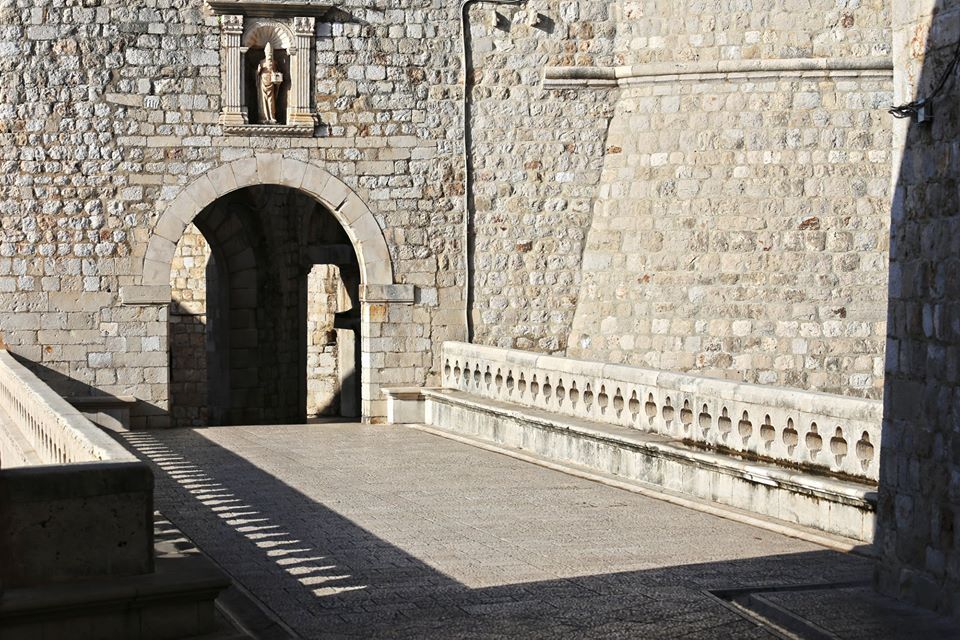
TZ Dubrovnik
Ploče gate is the eastern entrance to the city. When you pass through this gate, you will see two small churches. This entrance is fortified and had inner and outer gates with stone bridges from the fifteenth century onwards, and there lies a statue of St. Blaise, the city's patron saint.
Luža and the City Bell Tower
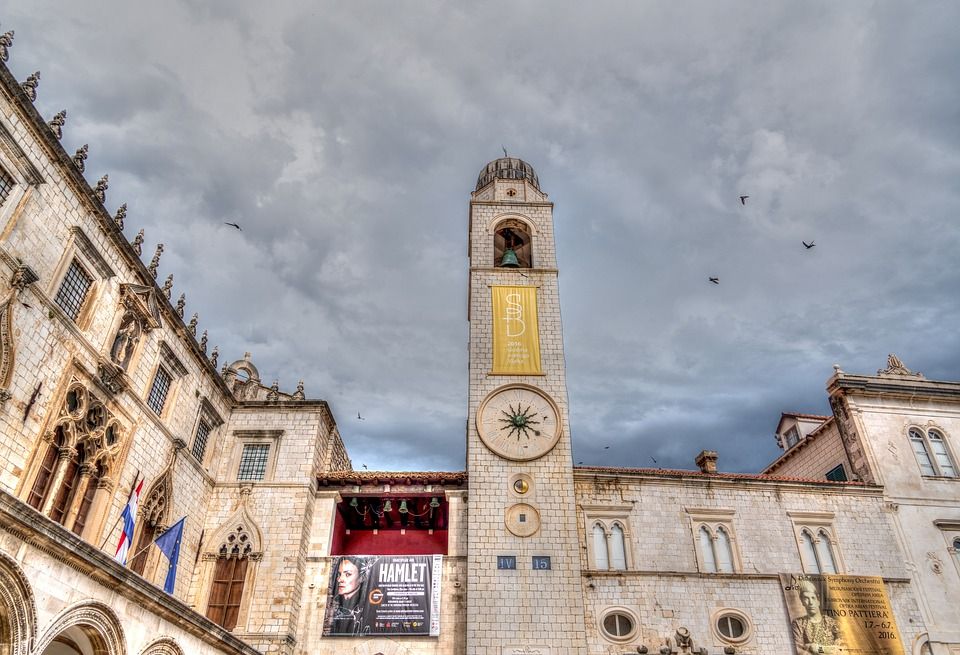
Pixabay
After passing through Ploče gate, you will end up in front of Luža and the City Bell Tower. The bell tower, built in 1444, once had figures called Zelenci who struck each hour with their hammer. The bell tower was damaged in the earthquake and it was rebuilt in 1929, while the Zelenci figures were replaced with replicas.
Sponza Palace
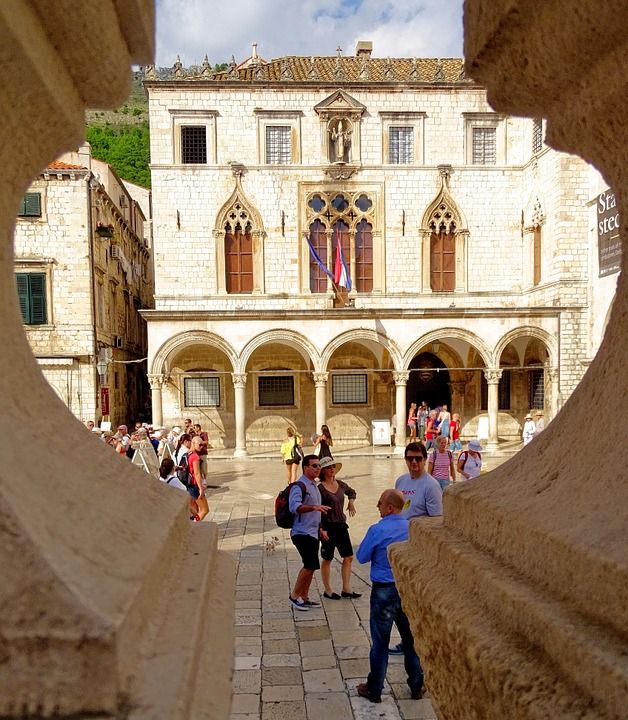
Pixabay
Right next to the bell tower lies Sponza Palace. This building is the best example of Dubrovnik's highly specific gothic-renaissance style. It was constructed in the sixteenth century based on the design of Paskoje Miličević. It was built in a rectangular shape and has a portico and an atrium. On the main wall lies the inscription: Fallere nostravetant, et fall pondere, meqve pondero cvm merces ponderat ipse deus (We are forbidden to cheat or falsify measures and when I weigh goods, God himself is weighing them with me).
This was the liveliest commercial centre of the city and in the seventeenth century, it became the meeting point for members of the Academy who discussed literature, the arts, and science. Today, it’s the home of the Dubrovnik archives.
Church of St Blaise
TZ Dubrovnik
The Church of St. Blaise is one of the most important buildings in Dubrovnik. St. Blaise is the patron saint of Dubrovnik who has been celebrated every year on February the 3rd, and this festivity is part of the city's UNESCO intangible heritage. The church got its present form is from 1715 and is a shining example of Venetian Baroque. It was built by Marino Gropelli upon the request of the Dubrovnik Senate. It was damaged in the earthquake, and then again in the fire in 1706.
In that fire, everything was destroyed except the silver statue of St. Blaise. This statue was then kept in the small church of St Nicholas on Prijeko before being brought back to its original place in 1715. This statue is one of the most valuable sculptures in Dubrovnik and the saint holds the city model, from which one can see how Dubrovnik once looked long ago. St Blaise has been being celebrated in Dubrovnik from the tenth century onwards, when he saved the people of Dubrovnik from a surprise Venetian attack with a solemn warning.
Orlando’s Column
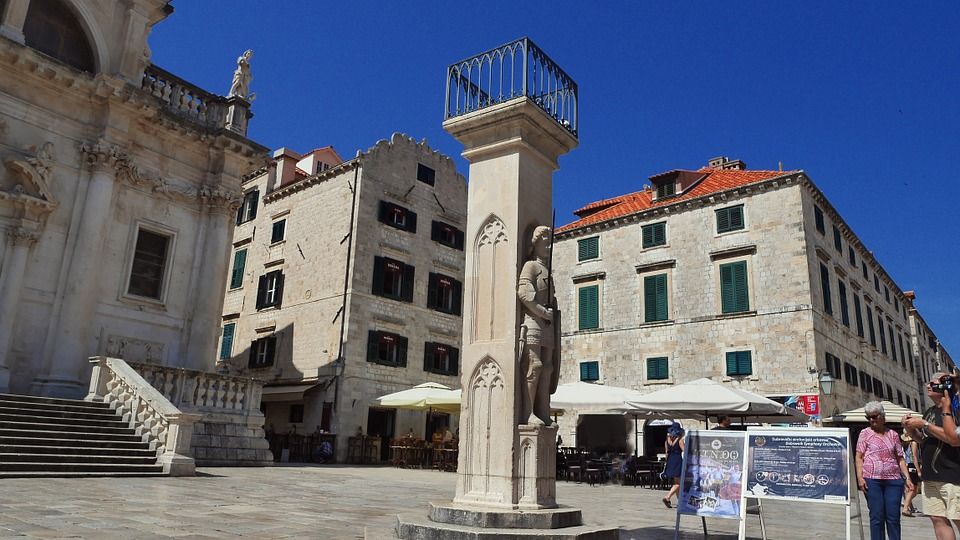
Pixabay
In front of the Church of St. Blaise lies the most important symbol of statehood and freedom for Dubrovnik – Orlando’s column. Orlando’s column was constructed by Bonino di Jakopo and Antun Raguso. Erected in 1419, Orlando’s column, with the statue of a medieval knight, stands in the square and presents Roland, the eighth-century knight from the Chanson de Roland. The reason this statue is in Dubrovnik is probably because it was brought by King Sigismund, a Hungarian and Bohemian king who was the patron of Dubrovnik Republic.
Additionally, there is a legend that says Roland saved Dubrovnik from Saracens and defeated them near the island of Lokrum. Senate decisions were announced in front of it. This statue was also a punishment spot and a pillar of shame. The white flag of the Dubrovnik Republic with the image of St. Blaise remained on the column until the abolition of the Republic in 1808. Now the Croatian flag flies there, and the flag is changed only during the Festivity of St. Blaise and during the Dubrovnik summer festival. This year, Dubrovnik is marking the 600th anniversary of the construction of Orlando’s column, and therefore 2019 is considered to be the year of Orlando.
Buža Gate
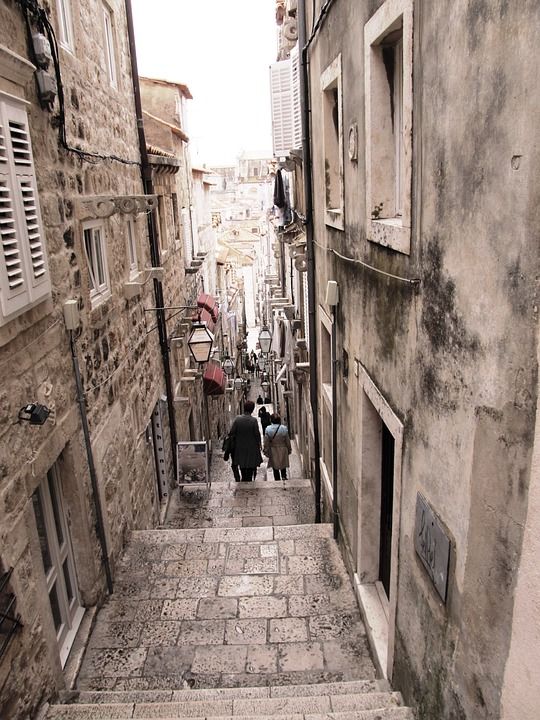
From Prijeko to Ruđer Bošković street (the place where the famed eighteenth century Croatian scientist, physicist, astronomer, and poet was born) stands the gate that was built back in 1907.
Gundulić Square
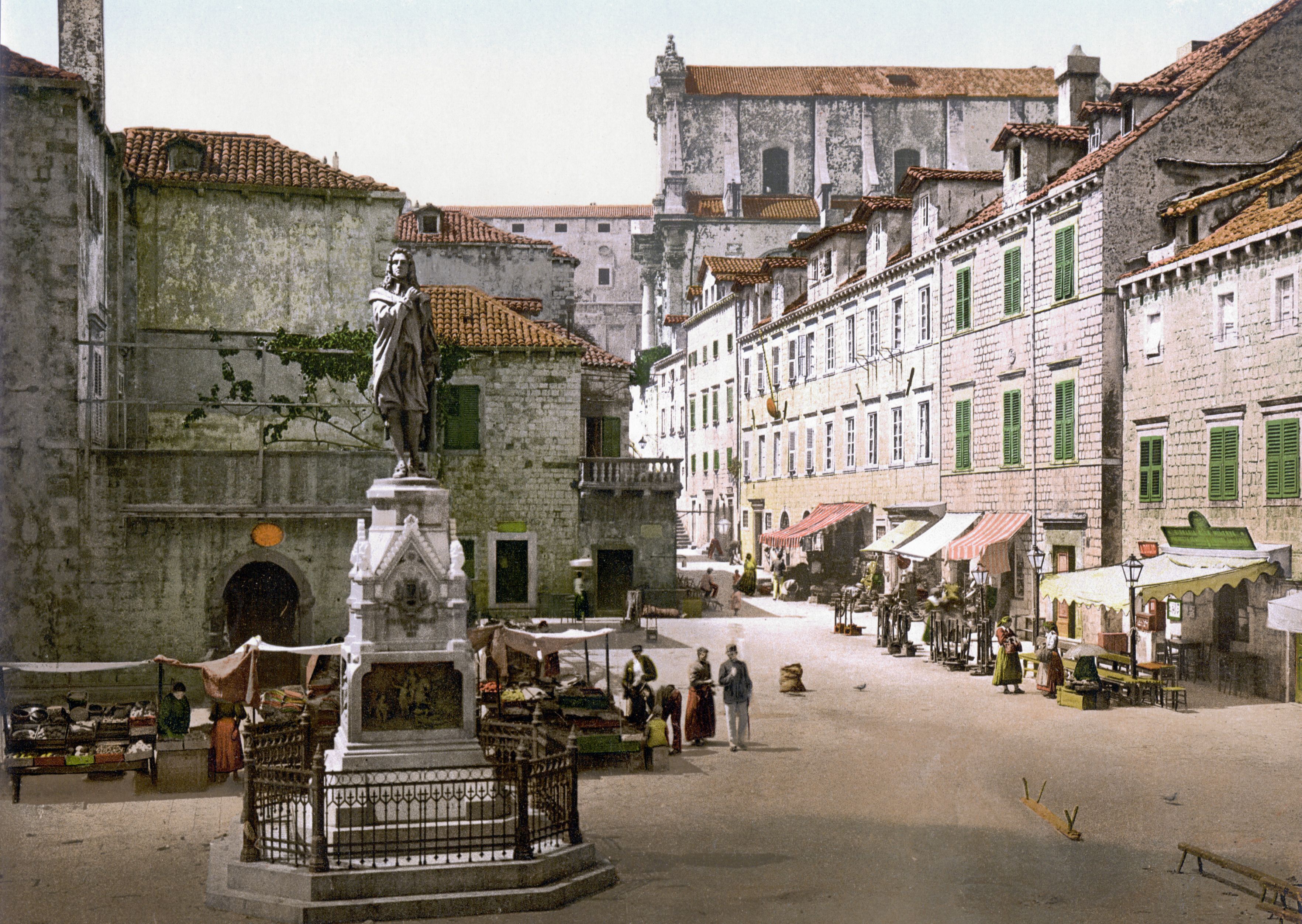
Behind the cathedral lies Gundulić square which is home to the statue of Ivan Gundulić, one of Dubrovnik's best eighteenth-century poets – this statue is the work of Ivan Rendić, and on the base of the statue there are bronze relives with scenes from Gundulić's epic poem - Osman. Ivan Gundulić was born in 1589 to an old and respectable aristocrat family. He later became famous on his own merit for his valuable works. This is the place where the green market in the morning sets up. What is interesting is that in front of the statue there are hundreds of pigeons waiting for their meal every single day – the city funds ten kilos of corn to feed the pigeons.
Jesuit Church
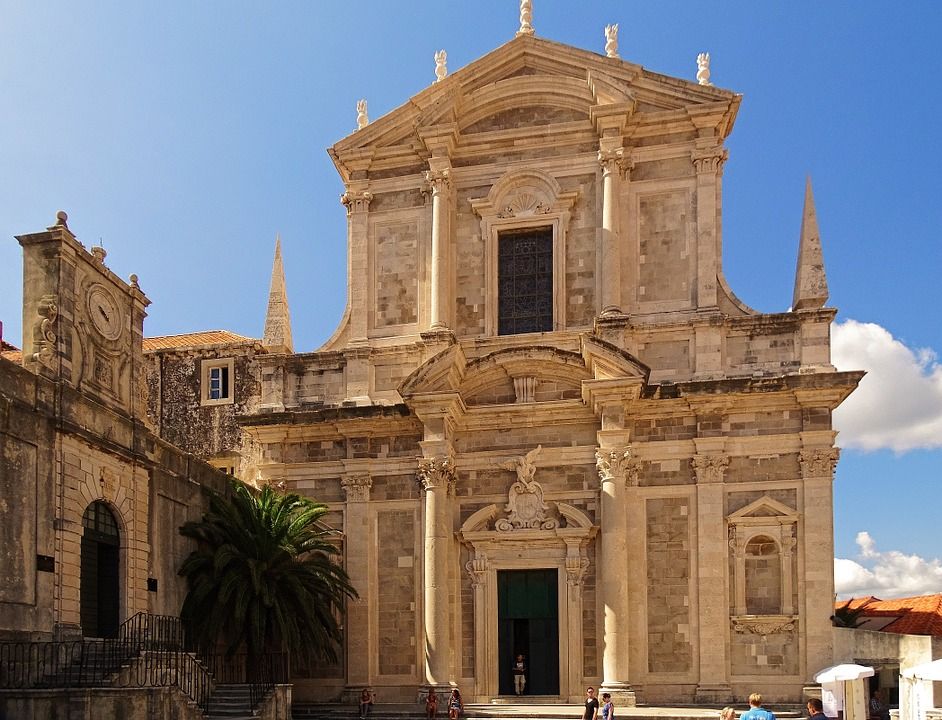
Pixabay
From there, if you go up the baroque stairs you will reach the Church of St. Ignatius or Jesuit church which is the home of Dubrovnik's most beautiful baroque complex. This church is the work of Ignazio Pozzo and right next to it is Collegium Ragusinum, the famous Jesuit school. Collegium Ragusinum was initially founded because the people of Dubrovnik were dissatisfied with their Italian teachers. The first steps for this to happen were initiated in the sixteenth century but it wasn't until the end of seventeenth and the beginning of the eighteenth century that works started. Collegium Ragusinum hosts a massive 10,000 volumes with incunabula and manuscripts by Dubrovnik's numerous writers.
City Harbour
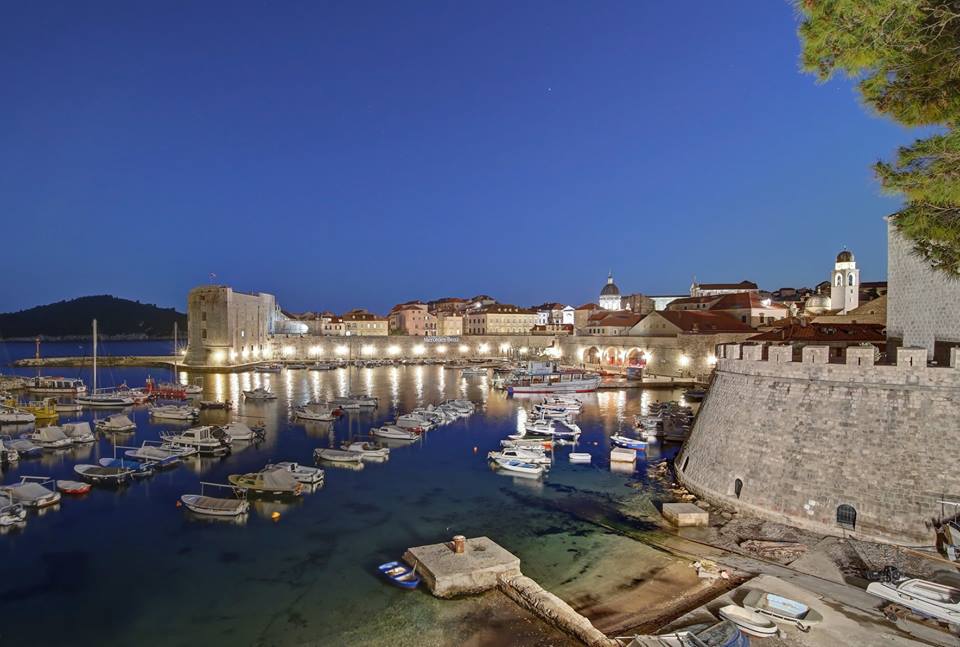
TZ Dubrovnik
The city harbour got its look back in the fifteenth century - the most recognisable part of it is the three arches of the large arsenal. East from the large arsenal there is the fish market gate and then three arches of small
arsenals where smaller ships were repaired. At the location of the large arsenal today lie the city cafe and the theatre.
Lazarettos
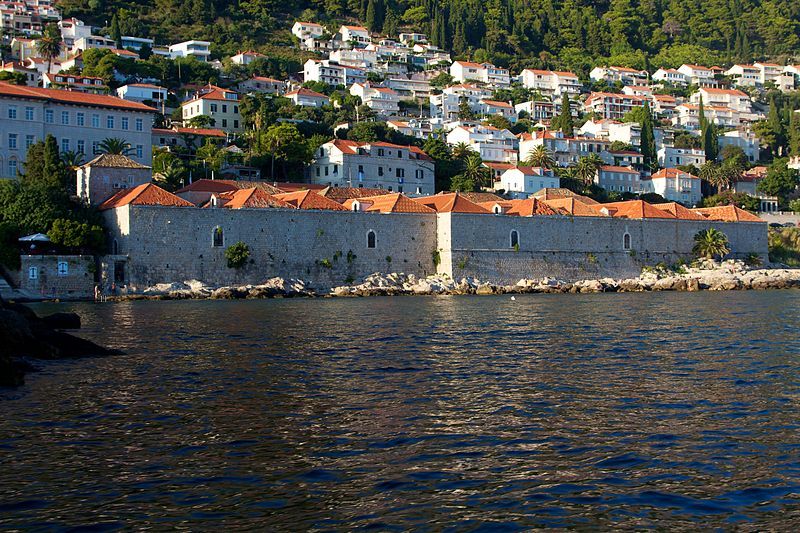
Ramon
Lazarettos (Lazaretti)
This was the place for the first quarantine built in the fourteenth century in order to isolate travellers and goods from eastern countries. There were eight buildings and five courtyards which were renovated in the sixteenth century. This complex included large warehouses and lodging for the extended stay of merchants and travellers. In the seventeenth century, this was the largest merchant transit centre on the Adriatic and one of
the best-organised quarantines in the entire Mediterranean.
With this sheer amount of invaluable heritage that is still standing today after all these centuries, Dubrovnik definitely deserves to be considered one of the greatest towns in the world, and its popularity in terms of tourist visits and global interest is very much understandable.
Cavtat Nominated for European Best Destination 2019 - Vote Here!
As Marina Ruso/Morski writes on the 2nd of February, 2019, after the well-known European Best Destination portal declared Zagreb as the best Christmas destination in Europe for three consecutive years, and the City of Zadar as the best European destination of 2016, this year has seen the charming town of Cavtat, otherwise Croatia's southernmost town, nominated for the prestigious title.
Cavtat can be found on the list of twenty destinations nominated for the best European destination in 2019, ranked with the likes of Genoa, Malaga, Budapest and even European giants such as London and Rome. After just the first week, Cavtat entered the list of the top ten destinations.
How can I vote?
Voting is extremely easy, just click HERE and in just a few seconds after having clicked on Cavtat, your vote will be cast. No registration is required on the page, but it is important to note that you can only vote once per week from one IP address. The competition will remain open until February the 5th.
Anyone who has visited Cavtat will agree that such small places which still manage to provide visitors with so much are rare. Cavtat, located in Konavle in the extreme south of Dalmatia, is rich in natural beauty, boasts an equally rich cultural and historical heritage, and its tourist offer standards are well and truly harmonised with the demands of today's tourists. The peace-content ratio that Cavtat offers makes it an extremely desirable destination for many, and now this nomination confirms that Konavle's gem can stand shoulder to shoulder with large European cities like London.
With this nomination, the European Best Destination portal ranked the picturesque southern Dalmatian town among the best in the following categories: "The Best Destination for Nature Lovers" and "The Best Romantic Destination".
''Just the nomination alone already means a lot and opens up additional opportunities for the development and the promotion of Cavtat, a year-round destination which continues to record tourism growth - a clear indication that it possesses an increasing importance on the travel list of many tourists from all over the world. We're happy that the European Best Destination association has recognised Cavtat, and we will be extremely pleased to have as many people join as possible to vote for Cavtat,'' said Frano Herendi, Director of the Tourist Board of the Municipality of Konavle.
Make sure to follow our dedicated travel page for much more.
Click here for the original article by Marina Ruso for Morski
Conference Celebrates Dubrovnik Old City and Festivity of Saint Blaise
ZAGREB, February 1, 2019 - A conference on the synergy of World Heritage properties and the Intangible Cultural Heritage took place at Dubrovnik University on Friday on the occasion of the 40th anniversary of the inscription of the Old City of Dubrovnik to the UNESCO World Heritage List and the 10th anniversary since the Festivity of Saint Blaise, the patron-saint of Dubrovnik, was added to UNESCO'S Representative List of the Intangible Cultural Heritage of Humanity.
Addressing the conference, Prime Minister Andrej Plenković said that being a Mediterranean and Central European country, Croatia can boast of a versatile cultural and natural heritage. "Dubrovnik and its great people have their niche in Croatia's history," he added, underscoring the significance of Dubrovnik's Old City as well as of the local festivity in tribute to Saint Blaise that takes place in Dubrovnik every February since the 10th century.
The Old City of Dubrovnik was added to UNESCO's World Heritage properties' list in 1979. "The 'Pearl of the Adriatic', situated on the Dalmatian coast, became an important Mediterranean Sea power from the 13th century onwards. Although severely damaged by an earthquake in 1667, Dubrovnik managed to preserve its beautiful Gothic, Renaissance and Baroque churches, monasteries, palaces and fountains. Damaged again in the 1990s by armed conflict, it is now the focus of a major restoration programme co-ordinated by UNESCO," reads information on UNESCO's website.
The Festivity on the day of the city's patron-saint on 3 February draws not only its residents but all those who honour tradition and the right to one’s freedom and peace. "On the third of February, the official day of both saint and city, parish banner bearers flow into the city in folk costume for the centrepiece of the festival, a procession attended by bishops, ambassadors, civic leaders, visiting notables and the people of Dubrovnik. The festivity embodies many aspects of human creativity, from rituals to folk songs, from performance to traditional crafts (including the making of the historical weapons fired in celebration)," according to information on UNESCO's website.
Prime Minister Plenković also commented on Croatia's contribution to UNESCO's efforts to preserve the world heritage, and recalled that Croatia financially supported efforts to restore the war-damaged heritage in Mali.
The prime minister announced that Croatia would participate in UNESCO's efforts to reconstruct Mosul, Iraq.
More news on Dubrovnik can be found in the special section.
Government Meets in Dubrovnik, Brings 4.5 Billion Kuna in Projects
ZAGREB, February 1, 2019 - Prime Minister Andrej Plenković said at a government meeting in Dubrovnik on Friday that 40 decisions on projects in Dubrovnik-Neretva County would be adopted today and that the contracts to be signed afterwards would be worth nearly 4.5 billion kuna.
The government will adopt conclusions on water utility projects worth 2.8 billion kuna, transport projects worth over 22 million kuna, investments in ports worth over 518 million kuna, and the construction of a day hospital in Metković worth 1.5 million kuna.
Plenković singled out the Pelješac bridge project. He visited the construction site yesterday. He reiterated the works were proceeding well and that the bridge, access roads and infrastructure facilities "should be finished in exactly three years."
He also reiterated that the 357 million euro with which the European Union was co-financing the project "is proof of the value of our EU membership." "I expect us to continue to work on projects which will strongly, by reallocating funds from the European budget, reduce the inequalities between parts of Croatia and contribute to a more even regional development.
The prime minister also highlighted a recently renovated barracks of the Croatian army's 116th brigade, saying it was a boost to the economic development of the Ploče port and for the army to help civil institutions during natural disasters.
As for the future day hospital in Metković, Plenković said it was a necessity for 50,000 people in the area.
Speaking of Dubrovnik's tourism results, he said last year's arrivals were up 8% on 2017 and that the county recorded more than two million arrivals. He added that many of the projects the government was discussing today, such as better transport connectivity between the south and the rest of the country, would help to increase the tourist turnover.
Plenković said that later today he would visit the construction site of Dubrovnik's wastewater treatment plant and the city airport. He also said that a Croatian government last met in Dubrovnik 14 years ago.
The Plenković cabinet convened the meeting during the Festivity of Saint Blaise, the patron of Dubrovnik. The central day of the festivity will be on Sunday.
At Friday's government meeting in Dubrovnik, ministers reported about what was done in their departments over the past period and plans about the period ahead, with Labour Minister Marko Pavić boasting of drawing more than 300 million kuna from the European Social Fund, of ensuring prerequisites for tourism development, and of a decrease in unemployment which, according to Eurostat, was 7.7% in December, below the European Union average.
Justice Minister Dražen Bošnjaković said the merging of municipal and magistrate courts made them more efficient and that this was especially evident in Dubrovnik-Neretva County.
Interior Minister Davor Božinović said the security situation in the county was satisfactory, with record-high seizures of illegal drugs, and prevention of migrant smuggling.
Science and Education Minister Blaženka Divjka announced the construction of a 200 million kuna student dormitory and the drawing of 87 million kuna from EU funds over the next five years.
Demography, Family, Youth and Social Policy Minister Nada Murganić said 17 projects worth 611.5 million kuna had been or were being implemented and that 132.9 million kuna was being absorbed from the European Social Fund for children's programmes.
The state secretary at the Foreign Ministry, Zdravka Bušić, announced the China + 16 summit in Dubrovnik on April 11-12.
Prime Minister Andrej Plenković announced that workers of Plobest Ploče whose health was poor because of working with asbestos would receive compensation.
More news on Dubrovnik can be found in the special Dubrovnik section.
Flights to Croatia: Volotea and Iberia Boost Operations
January 31, 2019 - The latest news from around Croatia’s airports for new flights to Croatia with updates from Dubrovnik, Zagreb, Pula, Rijeka Zadar, and Split.
Flights to Croatia: Volotea adds reinforcements to Croatia
Spanish low-cost carrier Volotea announced they were boosting operations on selected routes to Croatia this summer. Reinforcements have been announced to all four airports in Croatia where Volotea operates, AvioRadar reports.
For starters, the airline has extended the seasonal line between Dubrovnik and Bari, which will now run two weeks earlier and five weeks later - from June 5 to October 2. On the new service between Dubrovnik and Lyon, Volotea has launched a second weekly flight, which will take off on Saturdays. On the Dubrovnik-Nantes service, the third weekly flight will run on Mondays instead of Tuesdays as it did last year.
Volotea has also significantly extended their season on the Pula-Nantes line, which will run seven weeks earlier and five weeks later, from April 10 to October 30. This year’s new service between Pula and Bordeaux will operate five weeks into the post-season, from June 5 to October 2, as will the new service between Rijeka and Marseille.
On the line between Split and Marseille, the third weekly flight will run on Tuesdays in the heart of the peak season. Last year’s new service between Split and Nice will see another weekly trip on Wednesdays. And last but not least, the seasonal service between Split and Palermo will be significantly extended, and operate a month earlier and later than usual - from April 10 to October 30.
Flights to Croatia: Iberia moves focus to Croatia
The national carrier of Spain will increase capacity to Croatia by 44.6% this summer - and better yet, this is the first year the airline continued flights from Madrid to Zagreb and Dubrovnik over winter, EX-YU Aviation News reports.
"Currently, both destinations are offered twice a week from Madrid, though we will increase our services to both cities during the summer season. On the route from Madrid to Dubrovnik we will offer two additional flights a week in April, May, June, September and October 2019 compared to last year,” the airline said for EX-YU Aviation News.
Thus, Iberia will operate thirteen flights a week to Zagreb. They will also fly from Madrid to Split in July and August five times a week.
"Most of our passengers fly point to point, but we also have connecting traffic. Among the cities that feed more passengers to our flights from/to Dubrovnik, Split and Zagreb last year were New York, Lisbon, Bilbao, Porto, Chicago, Boston and Miami,” Iberia added. The airline also saw passenger a 105% passenger increase on services to and from Croatia in 2018.
Madrid and Zadar will even be connected two times a week this summer, from July 2 to August 31.
"These new additions to our program will reinforce our presence in Croatia, not only for point-to-point flights but for long haul connections as well," Iberia concluded for EX-YU Aviation News.
To read more about travel in Croatia, follow TCN’s dedicated page.
Lastovo: Daily Connection to Dubrovnik, Better Connection to Korčula
As Morski writes on the 19th of January, 2019, solving island ferry connections in Dubrovnik-Neretva County, especially the fast-freight and ferry connections for Vela Luka in Korčula and Lastovo, was the subject of a meeting initiated by the parliamentary representative Branko Bačić with the heads of Dubrovnik-Neretva County.
County Prefect Nikola Dobroslavić initially emphasised the problems of the lack of appropriate vessels, praised the upcoming investments in port infrastructure, and seized the opportunity to discuss the upcoming daily connection between Dubrovnik and the island of Lastovo.
''Dubrovnik-Neretva County has already prepared eight funding projects from EU funds, ie through the Ministry of Maritime Affairs, Transport and Infrastructure, and this is a great success. As far as boat connections are concerned, they're better than they were before, but there are still faults to be found. The priority is to connect Lastovo with the county centre of Dubrovnik. This is a project that should have been realised a long time ago, but it's positive that we're finally close to sorting it out,'' said the prefect, adding that everything should be done to make sure that children from Lastovo can keep going to high school in their county, more precisely on Korčula, and that the construction of pupil accommodation on Korčula is something that is indispensable. He stressed that a decision to co-finance the project should be made at the upcoming session of the Croatian Government in Dubrovnik.
Parliamentary Representative Branko Bačić said that he initiated this meeting in order to reach an agreement between Dubrovnik-Neretva County, the Ministry of Maritime Affairs, Transport and Infrastructure, and Jadrolinija for the drafting of a better connection between the southern Dalmatian islands of Korčula and Lastovo, and to find a solution for the ferry service for the Split - Ubli line.
"We have to consider all the possibilities, and I still think the most realistic option is to purchase a ship of a higher capacity and a higher speed than the ships we've been using so far on that line, and to do that for as long as we don't manage to build a new ship,'' Bačić said.
The managing director of Jadrolinija announced that the company intends to purchase a second-hand ship, that there is a possibility that they still need to run some checks on, but that he wanted to hear from the representatives of the islands or the local self-government unit.
The Mayor and those from the administration, as well as participants of the meeting agreed that the purchase of a ship was the only realistic possibility at this time, as well as to take on the construction of a new ship for that line. They also demanded that the Jelena catamaran be permanently left to operate on the Split - Ubli line.
The director of the coastal maritime transport agency, Paula Vidović, stressed that maintaining the line for Lastovo at an annual level costs about 41 million kuna out of the total cost of maintaining all the lines, which amounts to about 320 million kuna.
Four major conclusions were agreed upon at the meeting:
1. It is necessary that Jadrolinija immediately looks to purchase a ship for the Split-Vela Luka-Lastovo line and continues to build a new ship for the same line.
2. There is full support for the construction of eight local and county-level ports in the area of Dubrovnik-Neretva County.
3. It was established that the Jelena catamaran, which has all of the necessary maritime capabilities alone, is permanently kept on the Split-Vela Luka-Lastovo line.
4. It is also necessary to turn the Dubrovnik-Lastovo line, for which the Government has already given its consent, into an everyday route to ensure a better connection between Lastovo with the centre of the county, and so that secondary school students from Lastovo can continue to attend secondary school on the island of Korčula.
Follow our lifestyle page for more. If it's just Dubrovnik and southern Dalmatian you're interested in, give Total Dubrovnik and Total Korcula a follow.
10 Most Exciting Hotel Projects in Croatia Right Now
This year, according to data from the Ministry of Tourism, domestic tourism will see an investment of more than a billion euro. From that amount, hoteliers will invest more than 600 million euro in renovating existing hotels and building new hotels in Croatia.
At the end of last year, there were 1,700 hotels registered in Croatia with a total of 172,000 beds.
Of the total number of accommodation capacities in the country, which is about one million beds, hotels make up only about 12 percent. As a result, one of the intentions of the 2020 strategic development documents is the significant increase in hotels of several categories.
This year, the doors will open to many four and five-star hotels.
These are ten of the most attractive hotel projects in Croatia right now, according to T.portal on January 25, 2019.
The Adris Group’s tourism company Maistra has invested more than 600 million kuna in Rovinj’s Hotel Park. Although it was supposed to be open at the end of 2018, the hotel will receive its first guest in April this year. It is considered one of the most luxurious hotels in Croatia. It will have 209 rooms overlooking the old town of Rovinj, six restaurants, a wellness and spa center of 3800 square meters, a congress hall and a shopping promenade.
The architectural group 3LHD created the project, with the interior design by Italian studio Lissoni.
All rooms will have spacious terraces with green gardens, and 53 of them will also have whirlpools.
View photos of the Grand Park Hotel.
Hotel Palace Elisabeth, Hvar
After a thorough reconstruction, which included a 100 million kuna investment, the hotel Palace Hvar owned by Sunčani Hvar will open by the 2019 summer. The hotel will boast 5-stars, 45 luxury rooms and suites, an indoor pool, a luxury spa, and two outdoor terraces.
Otherwise, the hotel’s history dates back to the 13th century, and in 1899, the Spa Hotel Empress Elisabeth was opened, named after the Austrian Empress Elisabeth “Sisi”, a generous sponsor who financed the hotel’s construction. Therefore, the newly opened Palace hotel will bear its name - Palace Elisabeth, Hvar Heritage Hotel.
You can read more about it here.
Hilton Garden Inn, Zagreb
By the end of this year, Zagreb will have its third Hilton hotel, the Hilton Garden Inn. It will be located near the Green Gold Center and the existing Doubletree by Hilton Hotel on Vukovarska Street.
The company, Zagreb City Hotels, has announced that around 75 million kuna will be invested in 150 new hotel rooms.
The Garden Inn will be oriented to a wide audience, as well as business guests, and on the highest eighth floor, there will be a congress and banquet center with five halls for 400 guests.
In the spring, the doors should open to the new Split hotel Amfora, located along the coast of Žnjan. Behind the impressive, 26 million euro investment lies entrepreneur Zvonko Kotarac.
The new hotel will have four stars and 207 rooms with a total of 500 beds and will, therefore, be the largest hotel in Split.
The hotel was named after the family’s collection of amphorae between 1800 and 2500 years old, completely preserved and protected as a national cultural heritage, which will be exhibited within the hotel.
The Amphora will offer a 500-square-meter congress hall, a massive wellness area, saunas with a sea view and three swimming pools, two of which will also have a sea view, and the possibility of closing one in the winter with a glass wall. It is planned to employ 80 permanent and 40 seasonal workers.
You can read more about the project here.
Hotel Paris, Opatija
Slavonian entrepreneur Zdravko Josić announced the opening of his renovated hotel Paris in Opatija, which should open in June this year. Guests will be offered 190 refurbished rooms, a wedding hall, a wellness center, and a transformed tower.
In the second phase of reconstruction, Josić plans to build another 30 rooms and underground garage for guests, which should open in 2020. The total investment will amount to 75 million kuna.
Two years ago, construction works began on the Hotel Roxanich in Motovun, worth 50 million kuna.
At 3000 square meters, the hotel has 28 classic rooms and four suites and additional facilities such as a retail wine shop, a small club, wellness center, a garage for 36 vehicles and an extensive wine cellar, in which Mladen Rožanić invested an additional 32 million kuna.
Hotel Ambasador, Split
The opening of Hotel Ambasador on the Split Riva, which saw an investment of 17 million euro, should open this year.
The new hotel will have 101 rooms and suites, a restaurant with a 240-person capacity, a spa, a gym, a nightclub and an underground garage with 59 parking spaces. The opening is announced for the start of the tourist season.
The Ambasador was initially bought by the late football coach Tomislav Ivić 20 years ago. Ivić's successors then sold the entire project to Klaus Alex Birkenstock, unofficially titled as 'the king of shoes', who finally launched the investment into the hotel.
Hotel Bellevue, Dubrovnik
At the end of October last year, the restoration of the hotel Bellevue began, which cost around 36 million kuna, or more than 400,000 kuna per room. The Bellevue is part of the Adriatic Luxury Hotels Group (JLH) owned by the Lukšić family.
The opening is planned in the spring after the thorough renovation is completed according to the ideas of the Portuguese design studio Tereza Prego.
You can see photos of the project here.
Valamar Collections Marea Suites, Poreč
The largest Istrian tourist house Valamar Riviera will open a luxury 5-star family hotel, Valamar Collections Marea Suites, built on the site of a former apartment complex Pinia Sunny Residence.
Apart from the hotel is an attractive sandy beach, and guests will enjoy a 200-square-meter swimming pool, restaurants and numerous other facilities suitable for families with children.
IT Hotel, Zagreb
Imobilia tehno, the subsidiary of custom facade company KFK, is behind the IT Hotel, which saw construction begin in July 2017 in the area of Zaprudski otok in Zagreb. The new hotel will have 96 rooms at about 8,000 square meters. The planned categorization is four stars.
Of the additional content, the hotel will have a congress hall, restaurant, Irish pub, gym and chargers for electric vehicles.
You can find out more about the project here.
To read more about travel in Croatia, follow TCN's dedicated page.
Dubrovnik's Belvedere to Bid Farewell as New Luxury Hotel Project Begins
Dubrovnik's Hotel Belvedere was once the symbol of luxury of the Pearl of the Adriatic, boasting incredible views over the sparkling Adriatic sea, the emerald island of Lokrum and the UNESCO protected Old City. Sadly, Dubrovnik's former top hotel, once one of the most luxurious on the Adriatic coast, fell victim to JNA shelling during the Homeland War, an attack from which it never recovered.
Today, the Hotel Belvedere stands cold and dead on the very outskirts of the eastern part of the city, emerging from a rock formation facing out towards the open sea. Clinging to the rocks as a stark reminder of what occurred so recently, the hotel has become the home of a collection of stray and feral cats, a few birds, and the deafening sound of almost total silence. As the city around it continues to move forward, Belvedere is stuck in a time warp, offering a glimpse of the harsh reality of the war in Dubrovnik, while the rest of the city's scars are less visible.
Belvedere's time, however, is now finally up.
As Poslovni Dnevnik writes on the 21st of January, 2019, Dubrovnik's city council will need to adopt some modified planning solutions on Wednesday during this year's first session, as has been planned for the upcoming construction of the new hotel "Belvedere" in the place of the present, abandoned one.
To briefly recall, the up and coming luxury new "Belvedere" hotel is owned by the wealthy Russian citizen Viktor Vekselberg, who instead of a huge hotel complex, decided to build a smaller facility, while making sure it is the most luxurious hotel in the whole of the Republic of Croatia, just as Dubrovnik deserves.
The new "Belvedere" should boast as many as 600 beds and 500 parking spaces, as well as a congress hall and concert hall. Everything Dubrovnik's brand new Belvedere will boast is enough for it to be classed as a 7-star complex, Slobodna Dalmacija writes.
If Dubrovnik's city council undertakes what is needed on Wednesday, we will see the brand new spatial documents for brand new "Belvedere", and next year will come all of the necessary permits, after which, the demolition of the existing hotel and the building of the new one in its place will begin.
Stay up to date by following our dedicated business page. If it's just Dubrovnik you're interest in, give Total Dubrovnik a follow.
Flights to Croatia: Transavia Boosts Rijeka, Aegean Charter to Dubrovnik
January 20, 2019 - The latest news from around Croatia’s airports for new flights to Croatia, with updates from Rijeka and Dubrovnik.
Flights to Croatia: Transavia boosts Rijeka operations
Dutch low-cost carrier Transavia announced that they are boosting operations between Rijeka and the Netherlands in the heart of the tourist season this year. Namely, Transavia has significantly extended traffic on the route between Eindhoven and Rijeka. Travellers can now buy tickets two months earlier in the pre-season and two months later into the end of the season - or from April 18, 2019, to October 27, 2019. The airline had already announced another weekly flight in the peak season which will run on Tuesdays.
Furthermore, the airline is also selling their fourth weekly flight for the peak season, which will run on Saturdays from July 6, 2019, to August 31, 2019, AvioRadar reports.
Thus, Transavia will operate between Rijeka and Eindhoven four times a week in the peak season, on Tuesdays, Thursdays, Saturdays and Sundays. The airline will use the Boeing 737-800 aircraft between the two cities.
Flights to Croatia: Winter charter flights to Dubrovnik
Greek airline Aegean, which is a Star Alliance member, is operating charter flights from Dubrovnik to Germany, Austria, the Netherlands, Belgium, and the Scandinavian countries. The airline already began this service on January 14, which will run until May 12, 2019, AvioRadar reports.
Last year, the charter flights were operated by Corendon Airlines, which used a Boeing 737-800 aircraft four days a week, from Monday to Thursday. This year, the winter charter flights are working every day, seven days a week with at least two flights, bringing the total to about twice as many charter flights than last year. One Aegean Airbus A320 is permanently based in Dubrovnik for this service.
The RSD Reisen travel agency is organizing the charter flights for Central European markets and TSS Travel Service Scandinavia for the Scandinavian market. The flights are intended for seniors.
To read more about travel in Croatia, follow TCN’s dedicated page.
Split to Dubrovnik: Your Road Trip Itinerary
January 19, 2019 - To no one’s surprise, traveling from Split to Dubrovnik may be the most frequented route for tourists coming to Croatia - and specifically Dalmatia. While there are more than a few options on hand when going from one coastal town to the other, depending on whether you choose the bus, plane, boat, or car, you’ll get from the Dalmatian capital to the Pearl of the Adriatic anywhere between 1-6 hours, give or take.
Though if our opinion had any influence on your choice, we’d suggest you take a drive down the coast - and this is primarily because of the roadside charms you’ll find along the way.
Here’s how we think your road trip itinerary should look from Split to Dubrovnik.
Split to Omiš
Your first stop after leaving Split should be in Omiš, which is less than an hour away (though you should potentially factor in seasonal traffic). Omiš is known as the town where the Cetina River meets the Adriatic - and it’s also known for its history of pirates and klapa singing. Omiš also boasts many attractions, such as fortresses from the 13th (Mirabella) and 15th-century (Fortica), a precious old town, a 10th-century church, and perhaps best of all to keep your road-trip-hunger curbed - Soparnik, a Swiss chard savory pie that has been declared as intangible cultural heritage of Croatia by the Croatian Ministry of Culture.
From Omiš to the Makarska Riviera
Your next stop on the road trip should be, well, literally anywhere on the Makarska Riviera. While the town of Makarska marks the center of the Riviera and is perhaps the most famous for its Franciscan Monastery, unique museums, and churches, there are other stops you absolutely shouldn’t miss. Take one of Croatia’s best beaches, Brela, for example, or the town of Tučepi, which is known for having one of the longest beaches in Croatia. Or if you have more time to kill, don’t miss out on visiting Biokovo Nature Park!
From Makarska to Neum in Bosnia and Herzegovina
Did you know that you have to pass through Bosnia and Herzegovina on the road to Dubrovnik? Just an hour and a half away from Makarska is the town of Neum in Bosnia and Herzegovina, which is the country’s only access to the Adriatic Sea. A seaside resort town, Neum offers a variety of food, drink, and tobacco products at much lower prices than in Croatia - and if you’re hungry, make sure you try a mixed grill (and specifically čevapi) or a burek!
PS: Don't forget your passport!
From Neum to Ston
Just about a half hour away from Neum is the town of Ston, known for its oyster farming, salt works, and wall that is known as Europe’s equivalent to the Great Wall of China. Ston is a small town with just a few restaurants, but trying the oysters are a must - as is tasting the Ston risotto, which can be found at Kapetanova Kuća (Captain’s House), which was also named one of Croatia’s 100 best restaurants. And if you feel like you need to work off all the food from the trip, take a hike up the 3 kilometer Ston wall, which was built in the 14th century.
From Ston to Dubrovnik
The light at the end of the tunnel, Dubrovnik, is located less than an hour away from Ston, though one more stop could interest you. Precisely, the Trsteno Arboretum is known as the oldest arboretum in this part of the world - and it was also used as a filming location in the third and fourth seasons of Game of Thrones.
But the best part? If you don’t feel like making the drive but wish to see all the charms along the way, Solo Transfers is here to save the day. One of Croatia’s most trusted private transfers companies, Solo Transfers will take you door-to-door, and everywhere you wish in between on your Croatian adventure.
For more information on bookings, visit the Solo Transfers website.
To learn more about Split and Dubrovnik, follow TCN's travel section.

